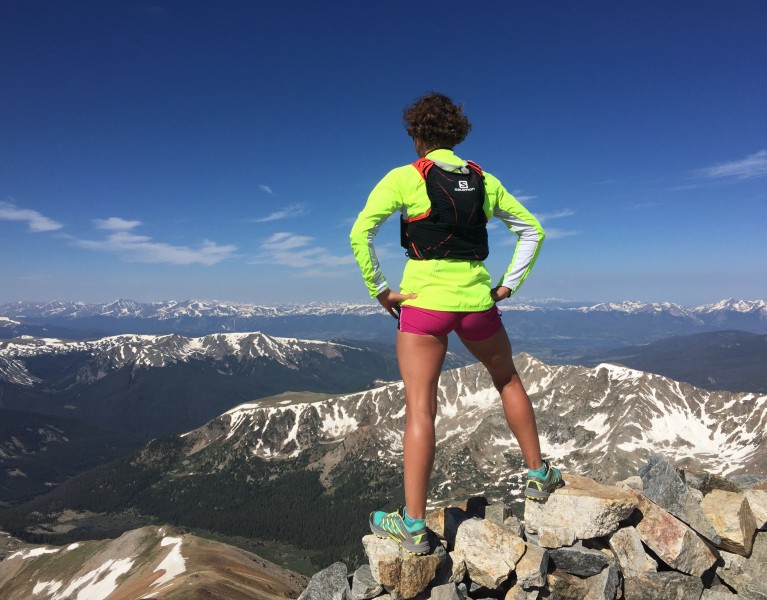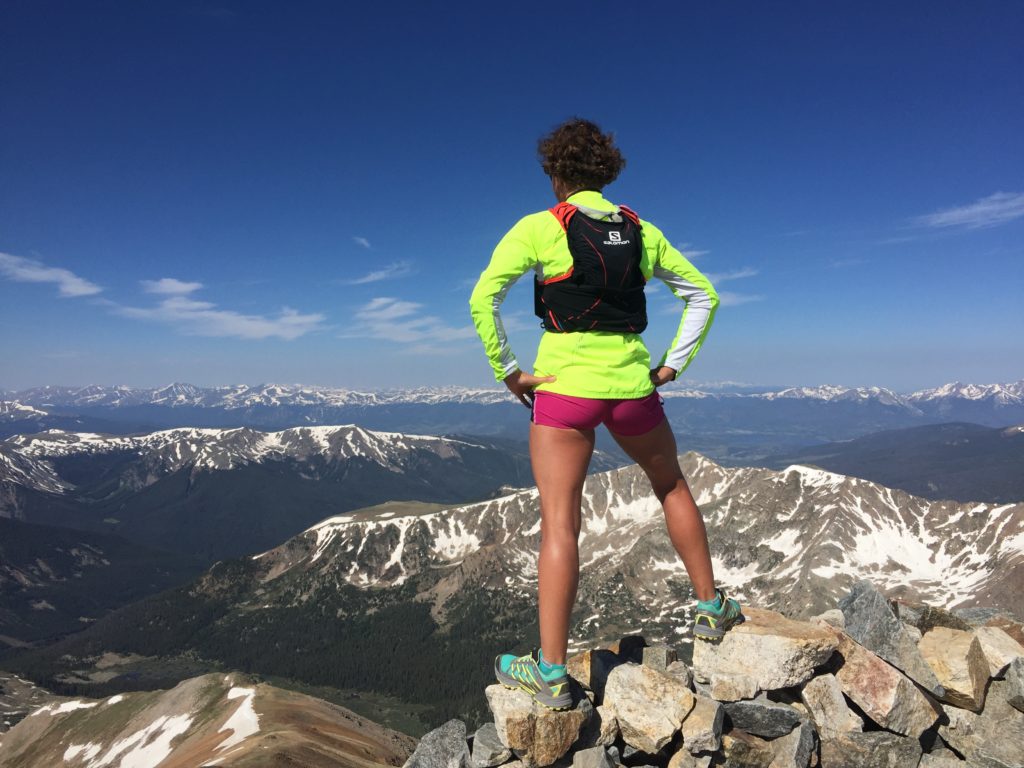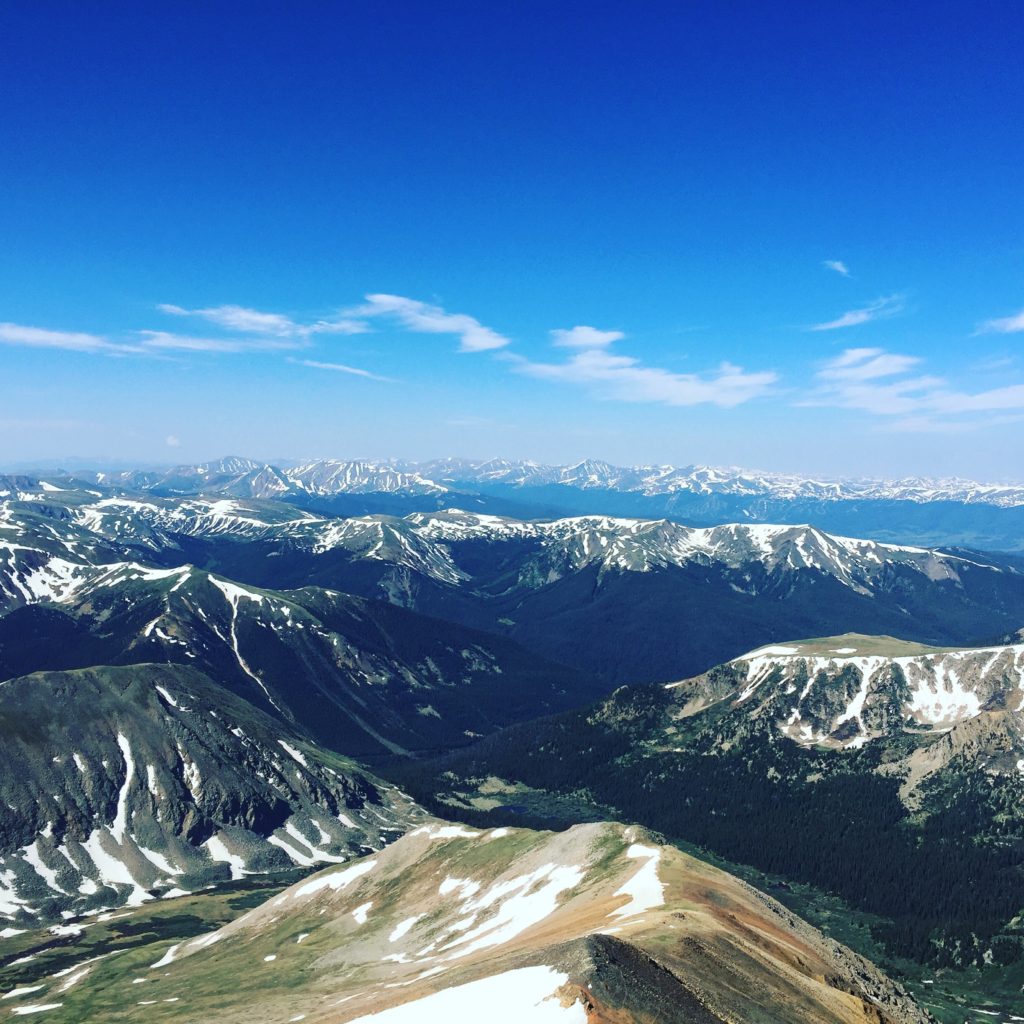I've been coming to Colorado to train for a few years now. My main goal is to be in the high mountains, but training fits well into that. Colorado is simply one of the best running playgrounds in the USA. There is nothing like running above tree line and summiting a Fourteener.
Unfortunately, running at altitude is possibly one of the hardest things you can do.
In the past few years, I've learned a lot about how to best acclimatize, as well as what not to do. Even after months above 9,000 feet, I'm always slower than below 5,000 feet (which seems to be my threshold for feeling completely normal), and steep climbs are always a challenge.
The challenge of altitude is, of course, the lack of oxygen. The percentage of oxygen above 9,000 feet and at sea level is the same, but because of the lower barometric pressure at higher elevation, there is about 25% less air and, therefore, less oxygen. Above 12,000 feet, that percentage drops even more.
To make up for oxygen deficit, your heart rate increases, which helps some, but it still does not make up for all the difference. Your body starts to adapt by slowly producing more red blood cells, but this takes weeks, hence acclimatization.
Altitude alone takes a while to get used to, especially above 9,000 feet. Trying to run while acclimatizing is a struggle, especially if there is a lot of climbing involved. Altitude sickness can be a life-threatening situation when the inability of the body to adapt leads to pulmonary and cerebral edema.
For those who have never run at altitude, it is not a pleasant feeling. Breathing becomes very difficult. I experience headaches and numbness in my fingertips, which I assume is due to the lack of oxygen (I am not a high altitude medic, so I might be completely wrong). My muscles get sore and fatigued much sooner, and harder movements, like lifting your legs over rocks or balancing, become much more of a challenge. Finally, eating and drinking are also impacted, and nausea is a common side effect of altitude, making recovery or fueling during races or long runs more difficult.
Everyone responds differently to altitude based on genetics and training. Generally, fit athletes will respond better, but this is not always the case.
General guidelines to acclimatize include:
- Taking it easy.
- Drinking more than usual.
- Training at higher altitude but sleeping at lower altitude (which helps with recovery), but this is not always practical.
- Fueling well and resting more.
- If you are racing at altitude, it is better to either spend at least 2 weeks at altitude or show up right before the race. Several studies have shown that acclimatization goes through a dip after 5 to 7 days.
Over the years, I've found a few things that work for me. Perhaps because of low iron content in my blood stream (iron is an integral part of the oxygen-transporting system in the body), I never have it easy at altitude, whether I'm racing, training or just running easy. I'm always the one in the very back, sucking wind and quietly suffering. However, things do get a bit better after about a week, and I feel almost normal.
My guidelines (DISCLAMER: I am not a doctor or high altitude coach, so I can only tell you what has worked for me) include the following:
- When I first arrive in Colorado, I listen to my body. I go slow enough to prevent the pounding in the chest, and I’ll walk when I have to.
- I do a lot of climbs above 13,000 and, whenever possible, above 14,000. There is a HUGE difference between 9,000 feet and 14,000 feet. For the first few weeks, I have to walk any uphill above 12,000 feet and slowly jog everything else. However, when I come back down below 10,000 feet, I always feel better.
- I do very short sprints the first week to 10 days, either on flats or runnable uphills. Normally, I can’t handle anything longer than 20-30 seconds. I'm not sure if this does anything physiologically, but I always feel like, after those, breathing at slower speed becomes easier.
- Swimming is a great way to recover. At sea level I will use easy runs to recover for a second workout: at altitude, there is no such things as an easy run. Swimming is a great second workout, and it’s not as hard as running at altitude.
- Running at altitude makes me nauseous, so it’s always hard to eat during or right after a run. To get in the same amount of calories, I’ll try to eat smaller amounts more often.
- I drop my expectations, dramatically. I've never had a great race at altitude, and always feel 20-30% less than my capacity.
Beyond the challenge, headaches and heavy legs, running at altitude is always worth it. There is nothing like running into a moose or a snow-white mountain goat. There is nothing like the solitude above tree line and the awesomeness of a summit. There is nothing like seeing the heavy, dark clouds roll in before a storm.
Every heavy breath is worth the incredible views, and there is no PR that means as much to me.
Francesca Conte is a professional runner, race director, and co-founder of Bad to the Bone Endurance Sports. She has won numerous 50K, 50 mile and 100 mile races. Born in Italy amidst the Alps, Francesca is now a proud U.S. citizen and splits her time between Virginia and Colorado.





